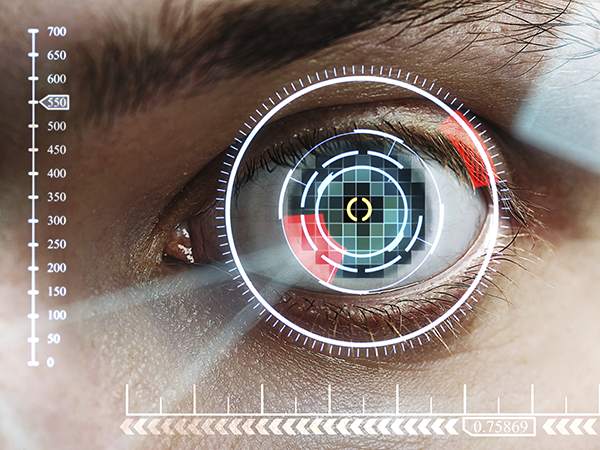As a first example we will consider ophthalmology, and specifically laser eye surgery (see Fig. 1). Though there are several medical procedures that involve lasers to treat eye conditions, the most common one is Laser-Assisted in SItu Keratomileusis or LASIK, in short. In this eye surgery, that was performed tens of millions of times to date, the shape of the cornea is changed so that light guided to the eye will focus on the retina, eliminating the use for glasses for near- or far- sighted patients. The cornea's topography must be characterized prior to the surgery to reshape it correctly. During the surgery, a first ultrafast laser with femtosecond pulse duration in the infrared region is used to cut a small piece of the cornea that is stored for later use, known as a flap. This femtosecond laser creates a clean cut due to its high peak power and small beam size. Later, an excimer laser is used for the ablation process, in which the exposed part of the cornea is ablated in a controlled manner to change its light-focusing properties. This laser has a shorter wavelength (e.g., 193 nm), invisible to the human eye, which is absorbed in the cornea, and does not propagate into the eye as visible light does. The light absorbed in the cornea heats it and vaporizes the tissue. Since the interaction of the light with the cornea is well characterized and the laser power is highly stable, proper timing of the laser operation duration and adequate beam guiding allow achieving the required amount of ablation needed to correct the eye vision. Finally, the flap removed by the first laser is placed back in its place and the healing process begins. With the aid of lasers, this highly sophisticated operation evolved into a very safe and almost painless procedure that takes only several minutes to complete, and significantly improves the patients' eyesight in a matter of hours.
Another field that harnesses lasers in an ever-growing pace is aesthetic treatments. The study of interaction of laser light with the skin enabled the invention of new medical procedures, each targeted for a specific need. Lasers are used to remove unwanted tattoos and body hair, and treat different skin-related conditions (e.g., reduce wrinkles, remove hyperpigmentation, tighten skin). Roughly speaking, the above-mentioned techniques can be divided into two distinct groups – ablative, where an intense laser light vaporizes the body tissue, and non-ablative, where the light penetrates deeper into the skin without damaging the outer layers. For example, non-ablative lasers are used to remove tattoos or unwanted hair by emitting light that passes through the skin's surface to the tattoo layer or hair follicle. Specifically, tattoo ink particles are too large for the human body to deal with, and that is why they can last for many years inside the skin. However, light guided through the skin can be absorbed in the tattoo ink particles and breaks them down to smaller particles, that can be removed as waste by the body. Ablative lasers, in contrast, are high intensity pulsed lasers that vaporize layers of the skin to reduce wrinkles or remove stains and acne scars. Among the typically-used ablative lasers is the Er:Yag laser, emitting light at a wavelength of 2940 nm. This wavelength is used since it is absorbed efficiently in water molecules which consists more than 60% of the human skin. Procedures done with ablative lasers are basically a form of controlled skin injury that allows skin rejuvenation after healing takes place.



 Ultra-High Velocity
Ultra-High Velocity